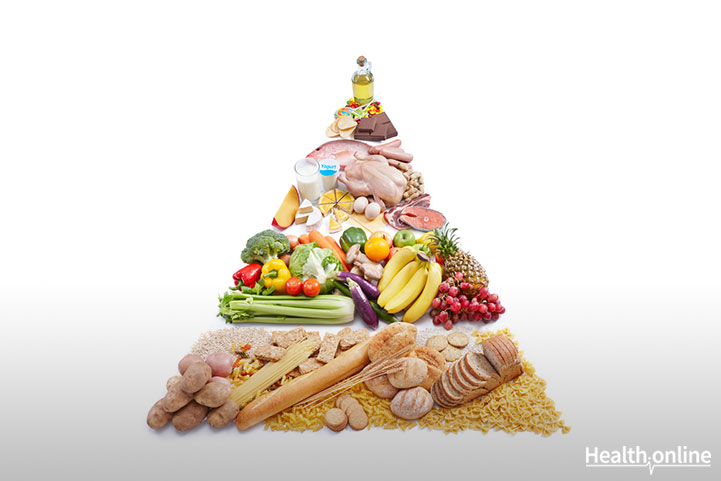
A Must Read Guide to the Food Pyramid
Want to lead a healthy life? Looking to break free from the cobweb of cardiovascular diseases? Then all you have to do is to get your nutrition right. It sounds so easy but requires meticulous planning. Wondering where to start with? For the uninitiated, we have formulated this guide to the food pyramid. The food pyramid guide is the dietary guidelines developed by the USDA (United States Department of Agriculture) and HHS (Health and Human Services) for American people aged above two years. This guide forms the framework for nutrition policy and is kept up to date by food scientists.
The rationale behind the food pyramid
The dietary guidelines are framed in such a way that it focuses beyond the four basic food groups. The USDA research on nutrition revealed the nutritional requirements of the Americans. Based on this research, this food pyramid guide has been formulated to help you eat healthily and make the best choices in eating right. This will also help you estimate how many calories you need to get from each food type, and what are the optimum levels of each component that you need to consume; like fat, carbohydrates, sodium, etc.
It is well-known that the quintessential American diet is rich in fat. The food pyramid guide will help you make decisions regarding how much saturated and unsaturated fat to consume and in what form, how many calories it offers, what foods to consume, and how to maintain a healthy weight to keep yourself safe from lifestyle-related cardiovascular diseases. Here are the guiding principles of this food guide:
- A variety of foods must be consumed to get the required energy and nutrients.
- The food intake should be balanced with physical exercises to maintain optimum weight.
- Your diet should contain a lot of vegetables, fruits, and grain products.
- Your diet should be low in fat in general, especially saturated fat and cholesterol.
- The food must contain only a moderate amount of sugars.
- Salt and sodium should be medium.
- Alcohol and beverage intake should be reduced.
How to choose the components of your diet?
The food pyramid is structured in such a way that the items at the bottom of the pyramid must be consumed in larger quantities compared to the food items at the top of the pyramid. Here is the list of components, listed from the bottom of the pyramid upward:
- Bread, cereal, rice, and pasta – six to eleven servings/day.
- Vegetable group- three to five servings/day.
- Fruit group- two to four servings/day.
- Meat, poultry, fish, eggs , dry beans, oil seeds and nuts- two to three servings.
- Milk, yogurt, and cheese- two to three servings.
- Fats, sweets, oils- in small quantities.
What is a serving?
Serving is an arbitrary measure of the amount of food that you can consume. It varies with your body weight and calorie requirement. For instance, a slice of bread is considered to be one serving. On the other hand, a cup of pasta is more than one serving. There is no standard measure that will tell you how much is one serving. Don’t worry if you are confused with what a serving is. There are other more measurable factors you can take into account while using the food pyramid.
Evaluate your calorie need
Every human being needs calories. First ascertain your calorie requirements based on your gender, height, weight and the type of work you do. If you engage in more manual work requiring long-standing hours or walking hours, then your calorie requirement would be greater, as compared to that of a software engineer. There are various calorie calculators online. Though they do not give you an exact measure, they are useful in finding out what you need.
Choose your meal plan
The food guide has been formulated in such a way that you have to include all the nutrients in the list to ensure a whole and balanced diet. You cannot replace vegetables with grains or vice versa. All are essential.
Here are few practical tips to choose your diet based on the food pyramid:
Start with the bottom of the pyramid
The bottom of the pyramid contains carbohydrates groups like cereals, rice, etc. One of your meals a day should have this. If you choose bread, try to take around 6 to 7 slices in order to get adequate nutrition. Do not overeat carbs, as excess carbs will find their way to the waistline.
Add vegetables and fruits
Never miss a green in your daily meal. Not all vegetables are rich in all nutrients. So you have to choose vegetables to balance all the requirements. One day you can choose cruciferous vegetables , and another day you can choose root vegetables. Make sure that you eat a variety of vegetables.
Fruits also require a similar allotment. Eat a variety of fruits, to get a wide range of vitamins and minerals.
Meat and protein-rich foods
Your body requires protein for its various functions. So a part of your diet should contain some amount of meat or fish or poultry or eggs.
Milk and dairy products
Rich in calcium and other nutrients, milk and dairy products need to be a part of your diet; albeit, in moderate quantities.
Fat and oil
Fat and oil, while perceived to be unhealthy, are an important part of a balanced diet. When you take them in moderate amounts, they tend to be very beneficial to the cardiovascular system.
So what are you waiting for? Read this guide once again and formulate your healthy diet for healthy living.




